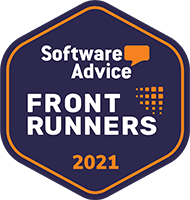Cycle Counting Methods: 4 Tips for Greater Efficiency

What is cycle counting and how is it different from a physical inventory?
While a physical inventory is a comprehensive count of all inventory in stock, usually conducted annually, cycle counting is a system of methodically counting smaller portions of stock on a regular basis.
While it takes discipline and a good system to implement cycle counting, it has many advantages over a physical inventory. Usually done at a company’s fiscal year-end, a physical inventory requires shutting down any inventory activity – including receiving and shipping – to ensure an accurate count. This is an expensive proposition in terms of labor and lost revenue.
Cycle counting is more advantageous because spot checks can be done while conducting business. It also does not take many resources to do on a regular basis. Cycle counting also enables companies to find inventory errors much more quickly than waiting until the end of the year, potentially saving significant capital.
Technology has enabled a more efficient and accurate approach to cycle counting than the manual approaches of the past.
What are cycle counting methods?
Cycle counting can be conducted in several ways depending on the level of technology applied:
- Manual. This method is the most basic and, while low cost, is prone to errors. An employee or distributor rep will take a count sheet in the warehouse or stockroom to note the inventory count for that bin by hand. Mistakes can easily occur; a bin may be misidentified, especially on items that have very long or similar part numbers or numbers can be transposed. Errors can be made at the secondary level when inventory counts are then manually entered into the distributor’s inventory management system.
- Barcode scanners. This is a faster and more accurate method. Employees or reps scan the barcoded item number on the bin and then enter the item count into the scanner or mobile device. This ensures that the count is entered for the correct item. The information may then need to be uploaded into the company’s ERP system. With the eTurns TrackStock’s app, all the needed information is at the user’s fingertips for customer stockroom inventory counting, tracking, re-classification, replenishment and reordering.
- Sensors. This method provides the most accurate and current information. Sensor bins, such as eTurns TrackStock SensorBins™, include IoT weight sensors under item bins that are integrated with TrackStock cloud software for fully automated replenishment. This technology converts bin weights to quantity to allow complete inventory counts multiple times a day with zero human intervention and can also trigger a replenishment order to the distributor’s ERP software.
With eTurns TrackStock automated replenishment software for point of use applications, such as service trucks or in stockrooms, cycle counting can be accomplished using any of the above methods. Some of the advantages of eTurns TrackStock’s app for inventory tracking:
- No need to buy scanners – just use the TrackStock app on a mobile device to easily manage cycle counting. Items are scanned as they are used and the app records the usage so there’s always an accurate on-hand count. The app continually compares the quantity on hand with the minimum and triggers an automated order up to the maximum to replenish.
- TrackStock SensorBins use touchless inventory tracking and can be set to measure the inventory levels several times a day depending on demand. For companies that have fast-moving or vital items that must always be on hand, especially on a manufacturing assembly line, SensorBins provide the best insurance the items will always be in stock.
ABC Cycle Counting
Most companies segment inventory into categories, which are then used to determine how often to conduct cycle counting. The “ABC classification” method determines categories as follows:
- A – Typically high-value, high-turnover, must-have-in-stock items
- B – Fairly important items that don’t turn over as often as A items
- C – Low turnover items
There are three ways to segment your inventory into categories:
- Arbitrary – preference based on a company’s needs
o For example, masks and gloves are not high-cost items but in a medical center they are high turnover and must-have items, therefore would get an A classification.
o On a manufacturer’s production line, an inexpensive fastener may get classified as an A item because it’s an item vital to the assembly and ensures the production line never goes down.
- Extended cost – based on the unit cost for an item multiplied by the total number of units purchased with a single order. Many distributors also include any ancillary charges associated with the order, determining a total cost per unit.
- Inventory Turns – based on the number of times an inventory item is sold or used in a strictly defined time period.
The Cycle Count Process Made Easier with the Right Technology
The eTurns TrackStock App provides multiple options to categorize, segment and track inventory. For example, you’re not limited to ABC categories – you can add D through Z, use descriptors or more. eTurns’s app allows you to define inventory categories, set up individual counting cycles for each, and choose whether to have segmentation fixed or automatically changed depending on preset conditions.
- Fixed Segmentation – Classification does not change unless you do so manually. However, notifications can be generated when the item runs low to upgrade the classification if needed.
- Automatic Segmentation – This is determined by actual usage of the material. For example, if you set up items valued at $1,000+ to be A items and a $950 item has a price increase that causes it to exceed $1,000, the item will automatically be included in the A classification and will be counted more often. Conversely, if the value of an item falls from $1,100 to $890, it will automatically move from an A to a B classification.
The eTurns TrackStock app also has other advantages over manual cycle counting:
- Flexibility – Users determine how items are classified, what items are automatically or manually classified, what thresholds determine re-classification, and how often each classification is counted. TrackStock also allows the user to either use item orders or consumption to calculate inventory turns.
- Notifications – Users get helpful notifications. For example, you can set up notifications if an item needs reclassification due to consumption. If you have the item set to automatically segment, you’ll get a notification its classification has changed due to pre-set thresholds.
- No missed item counts - If an employee cannot get to all the A items on the list that day, those items will be automatically included in the next cycle count.
- Not one-size-fits-all - Users can count both consigned and customer-owned inventory and have the ability to track each separately.
- Reporting – Users can obtain a report on the difference between customer count and current on-hand and determine how to deal with the discrepancy.
- Automatic replenishment with Min/Max Levels - updates of the inventory counts start the recalculation comparison to the set minimum level and then create a suggested order in the cart. If the count for an item is less than the minimum, TrackStock triggers an order up to the maximum.
Cycle Count Frequency
Determine how frequently to do cycle counting on your categories by considering:
- A - How critical or fast-moving is the item? Does it need daily or weekly tracking?
- B - Is it a slower-moving item that can be counted on a monthly basis?
- C - Is it a rarely moving item or a one-off that can be counted much less frequently?
With TrackStock, on-hand quantity, price consumption, receiving and counting can determine a change in inventory classification because those factors change the on hand quantity. All of those variables determine where it fits in the inventory classification and recalculates how frequently it should be counted. Users receive notifications when parameters change and an item’s count frequency should be reevaluated.
TrackStock’s sophisticated inventory tracking app manages inventory and cycle counting with a minimum of effort. With a system based on actual usage and utilizing a mobile device, users get accurate data and a cycle-counting process that determines the frequency of item counts based on user-defined categories and segmentation.
In addition, instead of having to wait until a rep can get to their customer’s stockroom, TrackStock’s automatic replenishment capabilities makes sure the distributor knows what needs to be ordered as soon as the item reaches a preset threshold. This ensures that distributors are meeting their customer’s important needs and not only providing a valuable service, but generating customer loyalty, as well.



